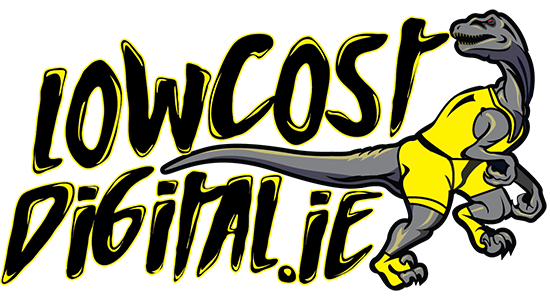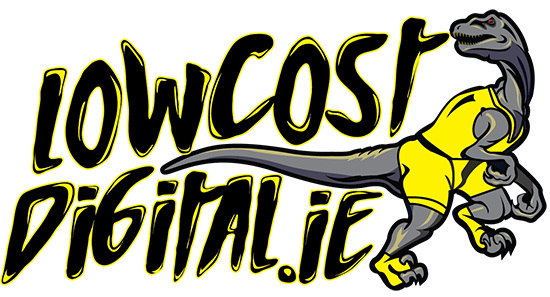As the digital landscape continues to evolve, staying up-to-date with web and app design trends is crucial for creating engaging and user-friendly experiences. From minimalist interfaces to dark mode preferences, designers are constantly exploring new ways to captivate their audience. Let’s dive into some essential web and app design trends shaping the industry today.
Key Highlights
- Web and app design is crucial for creating a seamless user experience and meeting user needs
- Web app design focuses on creating interactive online applications, while website design primarily provides information and content
- The web app design process involves understanding user and market needs, defining solutions, creating a backlog, building and iterating, and launching and testing
- Good web app design incorporates elements of user interface (UI) and user experience (UX) to create an attractive and intuitive interface
- Trends in web and app design include responsive design, minimalism, voice-activated interfaces, virtual reality (VR), augmented reality (AR), and the use of artificial intelligence (AI) and machine learning
- Accessibility is an important aspect of design to ensure inclusivity and a positive user experience
Introduction
In today’s digital age, web and app design play a crucial role in creating engaging and user-friendly online experiences. With the increasing reliance on digital platforms for everything from shopping to socializing, it has become more important than ever for businesses and developers to understand the latest trends in web and app design, including the use of marketplaces like Amazon.
Web app design refers to the process of creating interactive online applications that deliver a seamless user experience (UX) and meet users’ core needs. Unlike traditional websites that primarily provide information, web apps allow users to perform tasks and manipulate elements in a highly interactive way. On the other hand, great web application design focuses more on content and information delivery, while also prioritizing a seamless user experience.
Understanding the basics of web and app design is essential for software developers, web designers, and anyone involved in creating digital experiences. It involves a combination of user interface (UI) design, which focuses on the visual aspects of the interface, and user experience (UX) design, which considers the overall experience and satisfaction of the user.
By incorporating effective web and app design principles, businesses can create user-friendly interfaces, improve customer satisfaction, and ultimately drive better results. Whether it’s a web app or a mobile app, the design plays a crucial role in attracting and retaining users. In the following sections, we will delve deeper into the importance of web and app design and explore the key trends shaping the industry, including the process of choosing a design concept that will resonate with users.
Understanding the Basics of Web and App Design
Web and app design are essential components of the software development process. It involves creating user-friendly interfaces and designing engaging experiences for users. Web design encompasses various elements such as layout, typography, and color scheme, while app design focuses on creating intuitive navigation and functionality. User experience (UX) design is a critical aspect of web and app design, as it ensures that users can easily interact with the interface and achieve their goals. By understanding the basics of web and app design, developers can create effective and visually appealing digital experiences. www.lowcostdigital.ie
The Importance of Incorporating Web and App Design
Web and app design are crucial for creating engaging and user-friendly interfaces that meet the needs of potential customers. A well-designed web app not only attracts users but also keeps them engaged and encourages them to return. By incorporating effective design principles, businesses can enhance the user interface (UI) and user experience (UX) of their web app, leading to increased customer satisfaction. Additionally, a visually appealing and intuitive design can improve the usability of the web app, making it easier for potential customers to navigate and achieve their goals. By prioritizing web and app design, businesses can differentiate themselves from competitors, build brand loyalty, and ultimately drive better results. www.lowcostdigital.ie
Distinguishing Between Web and App Design
While web application design and web app design process have many similarities, there are key differences that set them apart. Web application design focuses on creating dynamic online applications that allow users to perform tasks and manipulate elements in a highly interactive way. These applications often have specific user paths based on the tasks users want to complete. On the other hand, web app design process primarily involves creating user-friendly interfaces and designing engaging experiences for users. It encompasses various elements such as layout, typography, and color scheme. Both web application design and web app design process require a sharp focus on responsive site elements, performance across multiple devices, and a streamlined user journey. However, the main differences between the two lie in the level of interactivity and functionality, with web apps offering a more dynamic and interactive experience compared to traditional websites.
Key Takeaways on Web and App Design Trends
Understanding the latest trends in web and app design is crucial for staying ahead in the digital landscape. By incorporating these trends, businesses can create more user-friendly and visually appealing interfaces. Key takeaways include the importance of user research and market research in the design process, the need for clear communication of the topic and focus, the use of emerging technologies such as VR and AR, and the role of AI and machine learning in predictive UI and UX designs. Additionally, user testing of wireframes is crucial for ensuring usability and making necessary tweaks and corrections at the earliest stage possible. Accessibility and inclusive design are also essential for creating web and app experiences that are usable for everyone. www.lowcostdigital.ie
Clearly Describe the Topic & Focus
When embarking on a web or app design project, it is important to clearly describe the topic and focus of the design. This involves understanding the goals of the project, the target audience, and the intended user experience. By clearly defining the topic and focus, designers can ensure that their design decisions align with the overall objectives and bring clarity to the design process. This includes considering factors such as the product design, information architecture, and user behavior. By having a clear understanding of the topic and focus, designers can create a cohesive and effective design that meets the needs of the users and achieves the desired outcomes.
Summarize the State of Knowledge: Knowns and Unknowns
In the world of web and app design, there is a constant state of knowledge that encompasses both knowns and unknowns. Knowns refer to the established design principles and best practices that have been proven to work effectively. These include concepts such as user research, development team collaboration, and the importance of real estate in design layouts. On the other hand, there are unknowns that designers continue to explore and discover. These may include emerging trends, new technologies, and innovative design approaches. By staying up to date with the latest research and industry developments, designers can navigate the knowns and unknowns of web and app design and continue to innovate in their work. www.lowcostdigital.ie
The Evolution of Design Trends
Web and app design trends have evolved significantly over the years, reflecting changing user expectations and advancements in technology. Historical milestones in web and app design have paved the way for current trends, such as responsive design, the mobile-first approach, and minimalism. These trends have focused on improving user experience (UX) and making designs more user-centric. As user interactions and behaviors continue to change, design trends will continue to evolve to meet the needs and preferences of users.
Historical Milestones in Web and App Design
The field of web and app design has seen several historical milestones that have shaped the current design landscape. These milestones include the advent of web design, the introduction of app design, and the development of main screens and layouts. As technology and user expectations have evolved, design trends have followed suit. From the early days of static web pages to the dynamic and interactive web apps we see today, designers have continuously pushed the boundaries of design to create more engaging and user-friendly experiences. Understanding these historical milestones can provide valuable insights into the evolution of web and app design and inspire designers to continue pushing the boundaries of what is possible. www.lowcostdigital.ie
How Current Trends Reflect Changing User Expectations
Current trends in web and app design reflect the changing expectations of users. User interaction and ease of use have become paramount, leading to trends such as responsive design and a mobile-first approach. Users expect seamless experiences across devices and platforms, and design trends have responded to this need. Additionally, color palette choices and typography have become important in creating visually appealing and engaging designs. By understanding and incorporating these trends, designers can create interfaces that meet user expectations and provide exceptional user experiences. www.lowcostdigital.ie
Navigating Through Latest Web Design Trends
Staying up to date with the latest web design trends is essential for creating visually appealing and user-friendly interfaces. Key trends to navigate include responsive design, which ensures that websites adapt and function well on different devices; the mobile-first approach, which prioritizes mobile design over desktop design; and minimalism, which focuses on simplicity and clean layouts. By incorporating these trends, designers can create websites that are accessible, engaging, and meet the expectations of modern users.
Responsive Design and Mobile First Approach
Responsive design and the mobile-first approach are two key trends in web design. Responsive design ensures that websites adapt and function well on different devices, providing a consistent user experience across desktops, tablets, and mobile devices. The mobile-first approach prioritizes mobile design, recognizing the increasing use of mobile devices for browsing the internet. By designing for mobile devices first, designers can create interfaces that are optimized for smaller screens and touch interactions. These trends are essential for creating user-friendly websites that are accessible and functional regardless of the device being used. www.lowcostdigital.ie
Minimalism and User-Centric Design
Minimalism and user-centric design are two important trends in web design. Minimalism focuses on simplicity and clean layouts, removing unnecessary elements and clutter to create a visually appealing and easy-to-navigate interface. User-centric design prioritizes the needs and preferences of the user, ensuring that the design is intuitive and user-friendly. By incorporating these trends, designers can create websites that are visually appealing, engaging, and provide a positive user experience. Minimalism and user-centric design work hand in hand to create interfaces that are both aesthetically pleasing and easy to use. www.lowcostdigital.ie
Exploring App Design Innovations
App design is constantly evolving with the introduction of new technologies and innovative features. Voice-activated interfaces, virtual reality (VR), and augmented reality (AR) are some of the app design innovations that are shaping the industry. These technologies offer new ways for users to interact with apps and create immersive experiences. By exploring and incorporating these app design innovations, designers can create interfaces that are engaging, intuitive, and push the boundaries of what is possible.
The Rise of Voice-Activated Interfaces
Voice-activated interfaces are becoming increasingly popular in app design. These interfaces allow users to interact with apps through voice commands, making it easier and more convenient to perform tasks. Voice-activated interfaces offer a hands-free and natural way of interacting with apps, improving the user experience and accessibility. With advancements in voice recognition technology, these interfaces are becoming more accurate and responsive. Designers are incorporating voice-activated interfaces to enhance user interactions and provide new features and functionalities in apps. www.lowcostdigital.ie
Virtual Reality (VR) and Augmented Reality (AR) in Apps
Virtual reality (VR) and augmented reality (AR) are transforming the app design landscape by creating immersive and interactive experiences. VR allows users to enter a virtual world and interact with it, while AR overlays digital information onto the real world. These technologies open up new possibilities for app design, such as virtual tours, interactive gaming, and virtual shopping experiences. By incorporating VR and AR into app design, designers can create engaging and memorable experiences for users, blurring the lines between the physical and digital worlds.
The Role of AI and Machine Learning in Design
Artificial intelligence (AI) and machine learning are revolutionizing many industries, including web and app design. AI and machine learning can be used to personalize user experiences, predict user needs, and provide seamless user interfaces. Through the use of predictive UI and UX designs, designers can create interfaces that anticipate user actions and preferences, offering a more personalized and intuitive experience. AI and machine learning also have the potential to automate design tasks and generate design recommendations based on user behavior and market research. www.lowcostdigital.ie
Personalization Through AI
Personalization is a key aspect of web and app design, and AI plays a crucial role in delivering personalized experiences. By leveraging AI algorithms and machine learning, designers can analyze user data and behavior to deliver tailored content and recommendations. Personalization enhances the user experience by providing relevant and personalized information, products, and services. It increases user satisfaction and engagement, as users feel that the interface understands their needs and preferences. By incorporating AI-driven personalization into web and app design, designers can create interfaces that are user-focused and provide exceptional user experiences.
Predictive UI and UX Designs
Predictive UI and UX designs utilize AI and machine learning to anticipate user actions and provide seamless and intuitive experiences. By analyzing user behavior and preferences, AI algorithms can predict user needs and guide users through the interface. Predictive UI and UX designs can automate repetitive tasks, streamline workflows, and provide real-time recommendations. These designs create a more personalized and efficient user experience, saving users time and effort. By leveraging the power of AI and machine learning, designers can create interfaces that adapt and respond to user behavior, providing a seamless and enjoyable user experience. www.lowcostdigital.ie
Importance of Accessibility in Design
Accessibility is a critical aspect of web and app design that ensures inclusivity and a positive user experience for all users, regardless of their abilities. Inclusive design focuses on creating interfaces that are usable by everyone, including individuals with disabilities. By considering accessibility from the early stages of the design process, designers can create interfaces that are accessible to all users, such as those with visual impairments or motor disabilities. Accessibility features include options for text-to-speech, color contrast, and keyboard navigation. By prioritizing accessibility in design, designers can create interfaces that are usable and enjoyable for everyone.
Making Websites and Apps Usable for Everyone
Making websites and apps usable for everyone involves incorporating accessibility features and design principles that cater to individuals with different abilities. This includes providing alternative text for images, ensuring color contrast for readability, and designing layouts that are easy to navigate with a keyboard. By considering the needs of users with visual impairments, hearing impairments, or motor disabilities, designers can create interfaces that are inclusive and usable for everyone. Usability testing with individuals with different abilities can also help identify potential barriers and make necessary design adjustments. Creating accessible websites and apps not only ensures inclusivity but also provides a better user experience for all users.
Best Practices for Accessible Design
Creating accessible design requires following best practices that consider the needs of individuals with disabilities. Some best practices include providing alternative text for images to ensure they can be understood by screen readers, ensuring proper color contrast for readability, and allowing for keyboard navigation throughout the interface. Additionally, designers should prioritize clear and concise content, provide captions or transcripts for multimedia content, and make sure form inputs are clearly labeled. By following these best practices, designers can create interfaces that are accessible to all users and provide an inclusive and positive user experience. www.lowcostdigital.ie
Future Outlook: What’s Next in Design?
The future of web and app design is filled with exciting possibilities. As technology continues to evolve, new trends and innovations will shape the design landscape. Emerging technologies such as virtual reality (VR), augmented reality (AR), and artificial intelligence (AI) will play a significant role in the future of design. These technologies will offer new ways for users to interact with interfaces and create immersive and personalized experiences. Designers will also need to stay on top of market research and user behavior to continue pushing the boundaries of design innovation.
Emerging Technologies Shaping the Future
Emerging technologies such as virtual reality (VR), augmented reality (AR), and artificial intelligence (AI) are shaping the future of web and app design. VR and AR offer new ways for users to interact with interfaces, creating immersive and interactive experiences. AI, on the other hand, allows for personalization and predictive UI and UX designs. These technologies will continue to evolve and become more accessible, opening up new possibilities for designers. By staying current with emerging technologies and incorporating them into their designs, designers can create interfaces that are innovative, engaging, and meet the changing needs of users.
Preparing for the Next Big Thing in Design
As the design landscape continues to evolve, designers need to stay prepared for the next big thing in design innovation. This involves keeping up with emerging technologies, conducting market research, and staying informed about user behavior and preferences. By staying current and adaptable, designers can anticipate and embrace new design trends, technologies, and user expectations. This proactive approach will enable designers to stay ahead of the curve and create interfaces that are innovative, engaging, and meet the evolving needs of users. By continuously evolving their skills and staying open to new possibilities, designers can position themselves as leaders in the ever-changing world of web and app design. www.lowcostdigital.ie
Conclusion
In conclusion, staying updated on web and app design trends is crucial for creating user-friendly interfaces that cater to evolving user expectations. By incorporating responsive design, minimalism, and personalized experiences driven by AI, you can ensure your designs are ahead of the curve. Embracing innovations like voice-activated interfaces and VR/AR further enhances user engagement. Accessibility should never be overlooked, making designs usable for all. As we look towards the future, being adaptable to emerging technologies will set your designs apart. Stay informed, implement best practices, and anticipate the next big thing in design to stay at the forefront of digital experiences. www.lowcostdigital.ie
Frequently Asked Questions
How to Choose the Right Design Trends for Your Project?
Choosing the right design trends for your project involves considering your project goals, user needs, market research, and functionality requirements. It’s important to strike a balance between following current design trends and ensuring that the design aligns with the specific requirements and objectives of your project.
What Are the Common Pitfalls in Following Design Trends?
Common pitfalls in following design trends include prioritizing trends over user experience and usability, neglecting market research and user feedback, and failing to meet stakeholder expectations. It’s important to use design trends as a guide while keeping the focus on creating designs that are user-centric, accessible, and meet the specific needs of your target audience.












